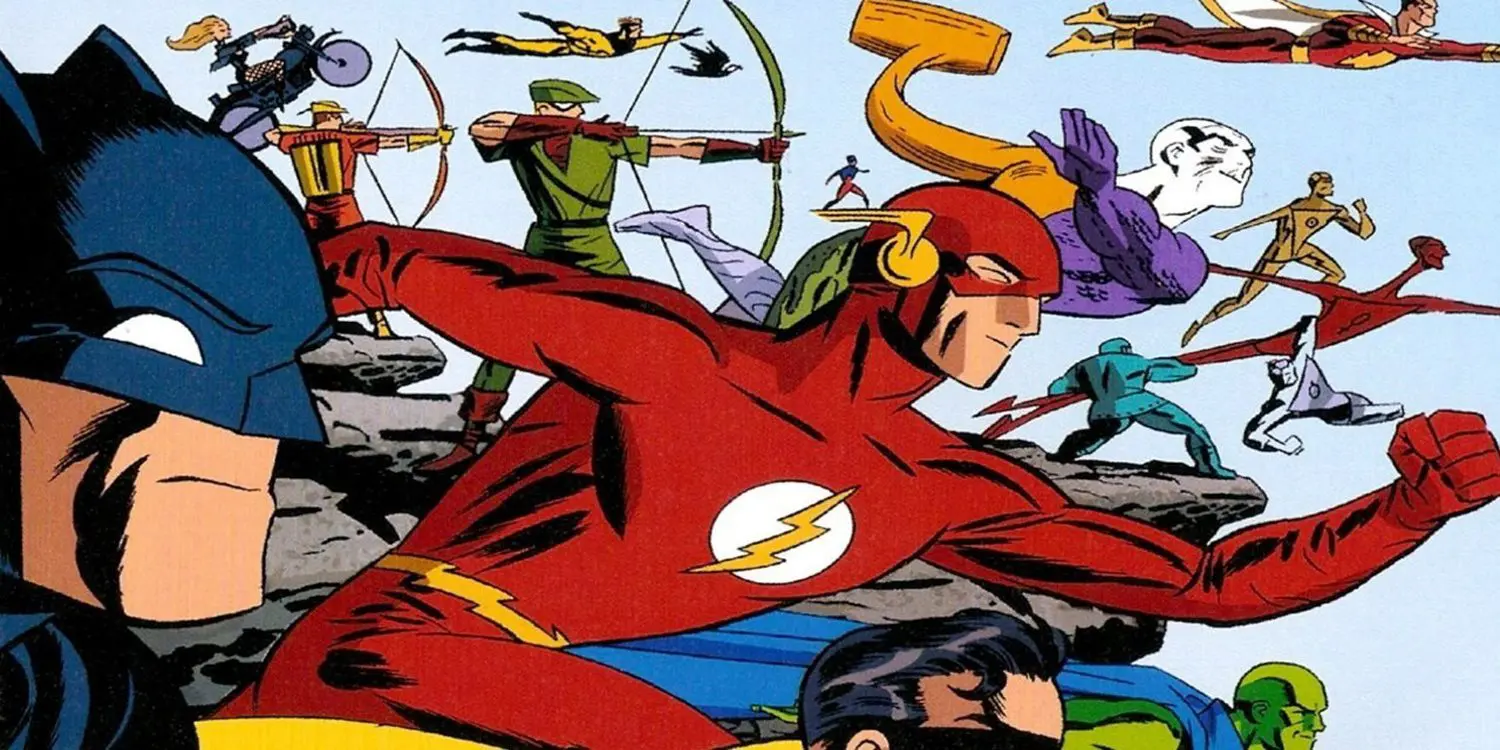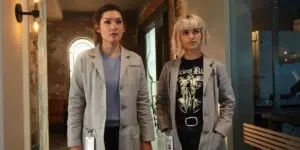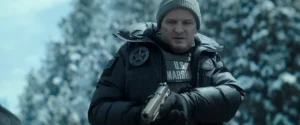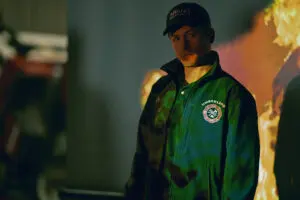Summary
Justice League: The New Frontier is a thin adaptation of the source material, offering some strong action beats and a suitably ludicrous villain, but none of the original story’s depth or significance.
Justice League: The New Frontier is a DC Universe Animated Original Movie. Check out the full archive by clicking these words.
Justice League: The New Frontier doesn’t work on its own terms. I know this because when I watched the movie, the second of DC’s original animated features, I hadn’t read the source material, Darwyn Cooke’s 2004 six-issue limited series, also titled The New Frontier. I’ve read it now. And having done so it’s clear that the only thing the movie adaptation offers is a visually-faithful cliffs notes version of that story; it coasts on the appeal of seeing familiar panels, dialogue and scenarios transplanted onto the big screen, while excising a lot of the historical immediacy, interesting subplots and metatextual significance of its inspiration. If you haven’t read the story, and if there’s no thrill in seeing bits of it being made to move around on your television, then what’s left is a movie that feels shallow, messy and unsatisfying.
This is hardly surprising. Condensing almost 400 pages into 75 minutes is a difficult thing to accomplish, and you’ll recall Superman: Doomsday had a similar problem. But you’ll also recall that Superman: Doomsday only dealt with a small number of characters in a straightforward plot: Superman dies, and then he comes back. The New Frontier is immediately more complex, both narratively and thematically, which exacerbates all the problems that hampered the latter half of DC’s previous feature. In many ways, it feels like a companion piece to the book, or an abridged version, which it shouldn’t, partly because it wasn’t advertised as such, partly because it’s doing a great story a disservice, but mainly because anyone without prior knowledge of that story isn’t going to get anywhere near the same kind of experience.
It’s a shame. The New Frontier really is a great story that works on multiple levels, but mostly as a backward-looking examination of how the times produce new heroes and remold iconic ones. The feature is content to be set in the late-50s – there’s a scene in the Korean War, and the costume design is reflective of the period. But it’s never about the late-50s or any of its social and political issues: Cold War paranoia, the space race, the advance of communism, the Civil Rights movement, and the threat of nuclear annihilation are all topics that are left by the wayside, and given that the book actually had things to say about that stuff, the comparatively tight-lipped movie just feels lighter and less interesting as a result.
It’s also juggling too many moving parts. In many ways, The New Frontier is an origin story for a young, pre-Green Lantern Hal Jordan (David Boreanaz), and large portions of the movie are told from his perspective. But it’s also a story about the formation of the Justice League; of superheroes being sidelined by a mistrustful government, and of stalwarts like Batman (Jeremy Sisto), Superman (Kyle MacLachlan) and Wonder Woman (Lucy Lawless) continuing to fight for truth and justice despite being hurtled towards an uncertain future. It’s a story about The American Way, and how national ideals have to continuously morph in order to accommodate new threats to freedom and liberty, but it’s also a story about power rings and lonely Martians.
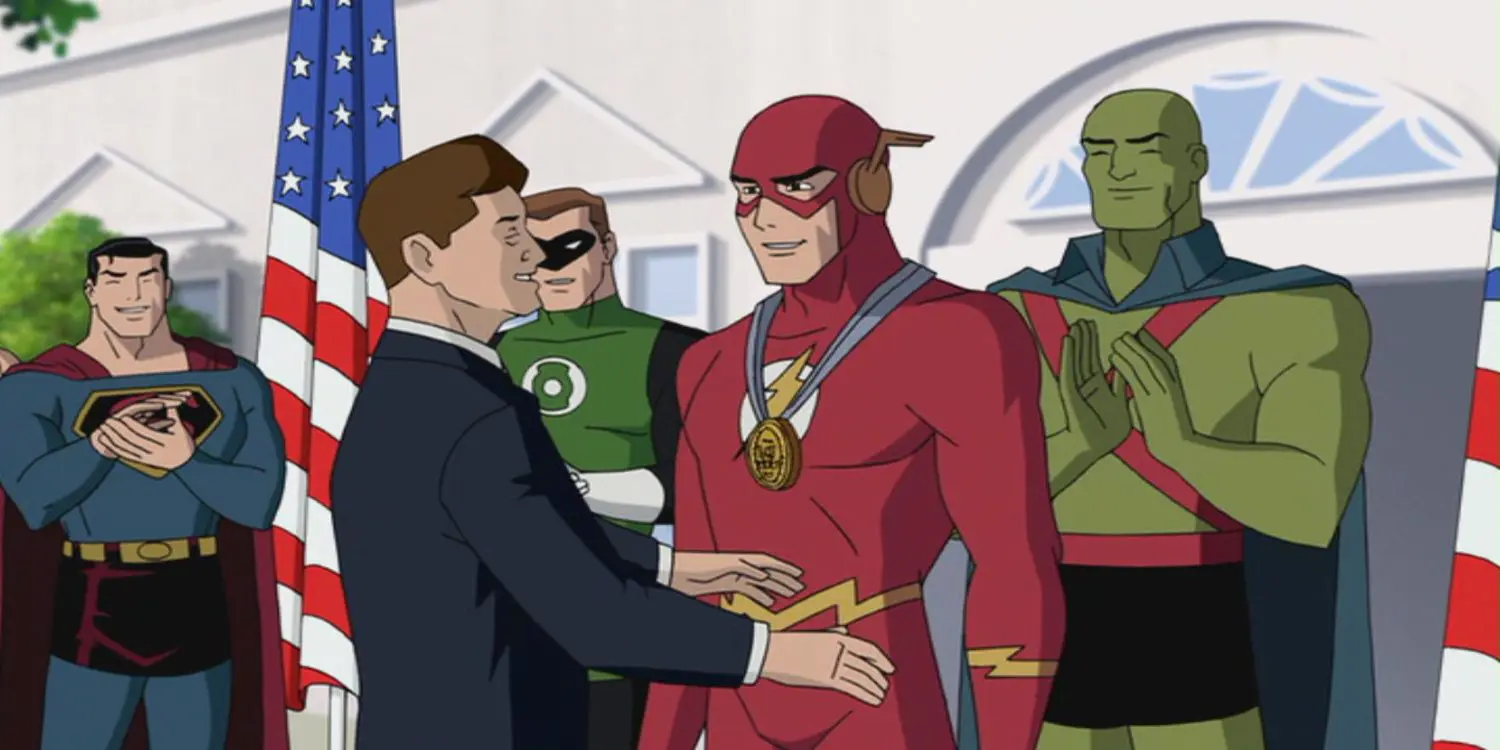
The book somehow made all these themes and narrative components make sense together; the movie leaves the themes unexplored and arranges the components in a schizophrenic, often lazily-voiced checklist. What’s surprising is that everything builds towards a bombastic finale that totally works, evoking Top Gun, Independence Day and a host of other “dudes on a mission” movies in a large-scale action set-piece that is exciting and compelling without the need for any broader context. It’s the only sequence in the movie that I, as a newcomer to the material, felt genuinely invested in, and thank God for it, because without it there’d be nothing of merit in Justice League: The New Frontier for anyone who hadn’t lovingly ingested every panel of the original book.
I suppose the villain deserves some credit because it’s easily one of the dumbest things I’ve ever seen. Called “The Centre”, it’s a living landmass that has apparently been around since the dawn of time and is so sick of humanity that its plan is to wipe every sentient being from the face of the earth. But check out the powers this thing possesses: it can spew out dinosaurs, it’s telepathic and telekinetic, it can discharge huge blasts of some unspecified energy, it can propel itself through space, and it’s voiced by Keith David. The thing’s backstory and abilities make considerably less than no sense, but I can get behind its grievances, and, really, as an excuse to unite multiple eras of superheroes and as a platform on which to build a fun action sequence it does its job well enough. “The Centre”, though. Horseshit.
That everything involving The Centre is a highlight should tell you what you need to know about Justice League: The New Frontier. Don’t get me wrong: If you’re a fan of the original book and you’re interested in seeing a condensed version of it as an animated feature, then definitely check this out. The art style translates really well and it’s about as faithful an adaptation as you could really cram into 75 minutes. Outside of that ability to court established fans, though, there’s very little to recommend here beyond an above-average finale and an enjoyably ludicrous villain. That might well be enough for you, and if it is, fill your boots. But just remember there are many more features in DC’s animated stable that are far more deserving of your low standards.

